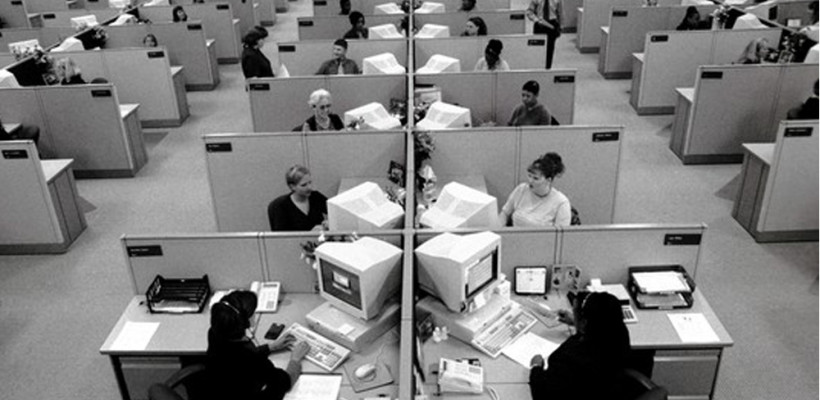
Harvard Business Review devoted a considerable amount of their October issue to the office workspace. They reported that in 2013 more than 70% of employees work in an open office environment and the size of their individual workspaces is shrinking. The move toward open office environments began in the 1990’s in response to the need for more collaboration. As history is being retold, employees’ want for collaboration was the impetus for the dramatic shift in office configurations.
Reading this I reflected on my 25 years as part of the corporate workforce. In 1985 my first job had me sitting in an open space environment with a series of gray desks lined up in neat little rows. From that point forward my nameplate was hung on every imaginable office configuration from a walled cube to a corner office to a shared office to an open-work area with two shoulder-high privacy partitions that separated me from my colleagues.
When did I experience the most collaboration? Did the open-work environments result in more collaboration? Based on my experience, not really. It may help and enable more collaboration but it’s not the end-all be-all. What leads to greater collaboration is trust and respect.
I worked in an office where all twenty of us sat in one large open space with trendy furniture and a hip downtown New York vibe. We each had a table that served as our desk along with a three-drawer movable file cabinet. It was a small outpost for a well-regarded branding consultancy. In theory, it should have been a highly collaborative environment. There were no visible barriers to communication and nothing to impede our ability to work together. In fact, we needed to work together to deliver client projects. However, people barely spoke or interacted with each other. Projects were completed through a series of handoffs from one person to the next. It felt more like an assembly line than a fluid creative process. What was missing, trust? Among the twenty, factions were formed with different agendas and suspicious eyes. Tension constantly hung in the air and our work product suffered.
Conversely, I worked for a large advertising agency housed in an old New York City office building. Decade after decade the office floors, and furnishings found through office monster and other suppliers over the years, had been reconfigured so many times that you needed a treasure map to find my sliver of an office that faced into an elevator shaft. During that stint, I had one of the most collaborative cross-functional teams of my career. While we sat on different floors, with cobbled together furniture, we worked together seamlessly and created award-winning creative, built strong client relationships and increased revenue. The team personified respect and we never wavered in our commitment to each other and to our client.
I believe that environment plays a role in fostering collaboration but it must be accompanied with a culture of deep trust and respect. Throughout most of my career the relationships I had with colleagues were built on trust and respect. Those experiences were the most enjoyable and rewarding. As companies are busy reconfiguring their offices to aid collaboration they must also pay equal attention to how colleagues are being with each other. Without trust and respect, collaboration will never flourish.
